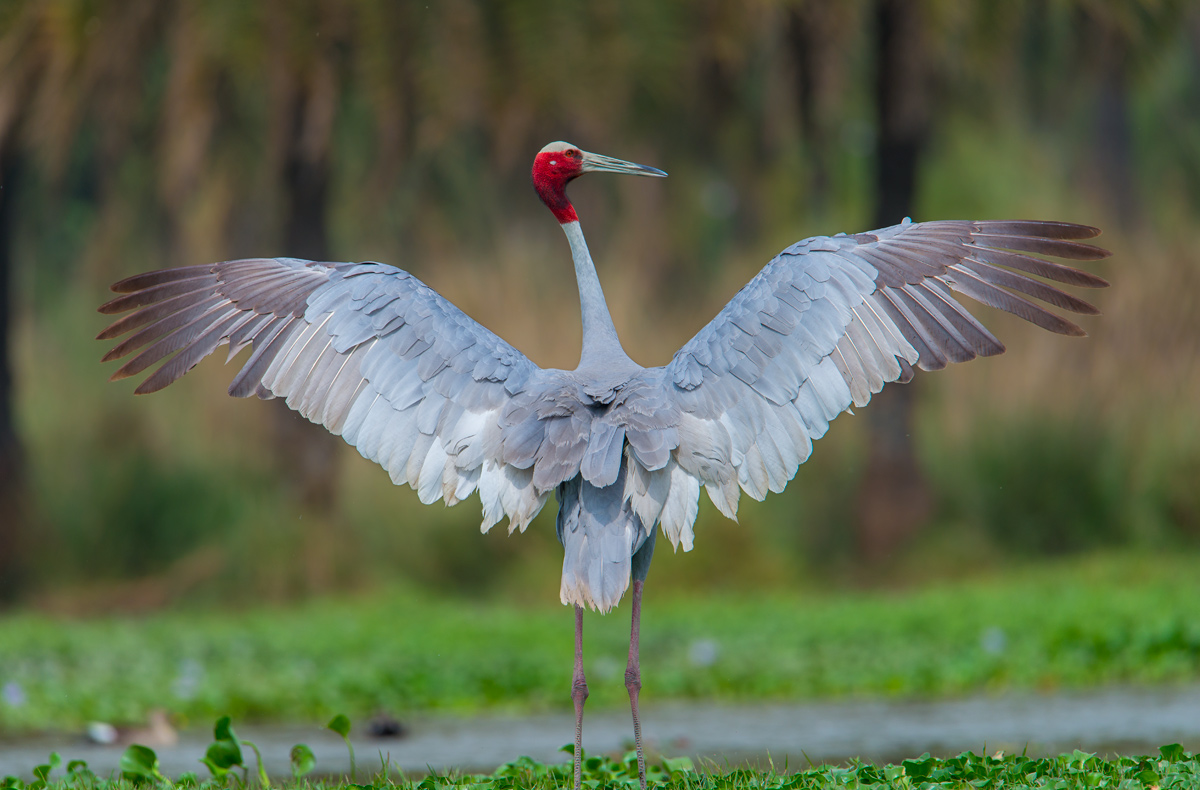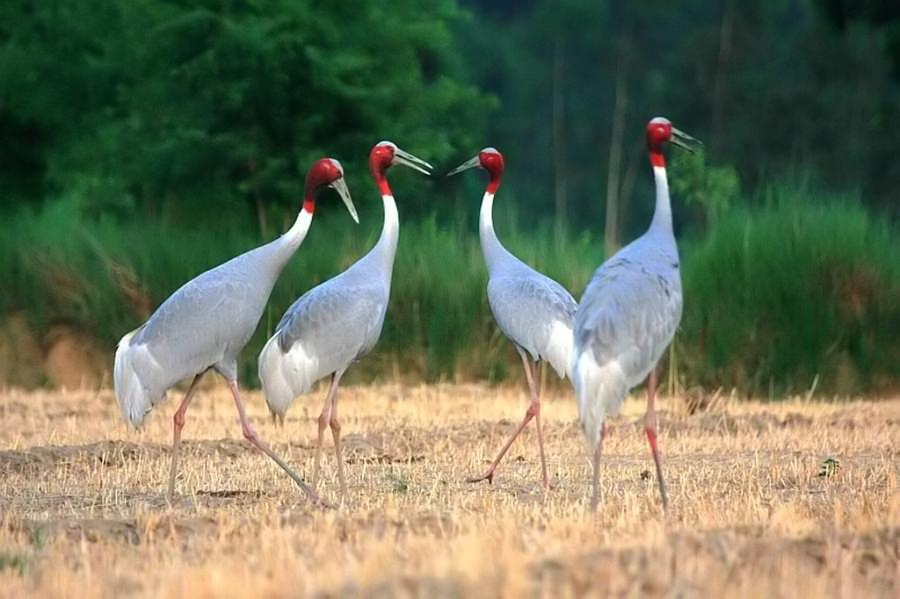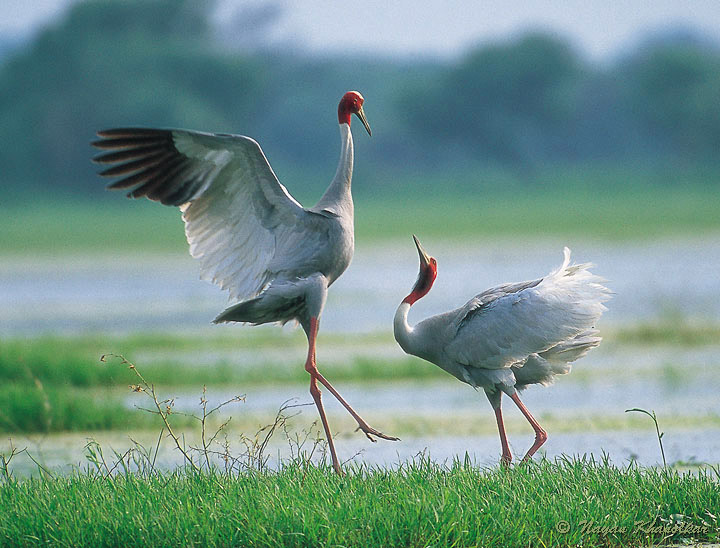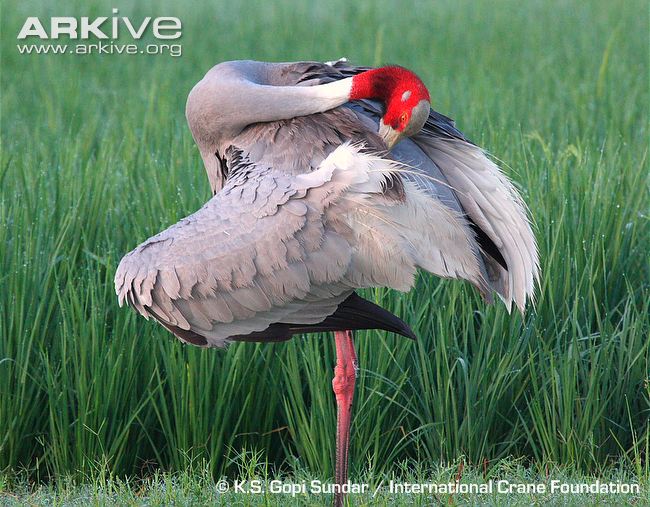
Grus antigone
SUBFAMILY
Gruinae
TAXONOMY
Ardea antigone Linnaeus, 1758, India. Three subspecies.
OTHER COMMON NAMES
English: Sharpe’s crane; French: Grue antigone; German:
Saruskranich; Spanish: Grulla Sarus.
PHYSICAL CHARACTERISTICS
Height up to 69 in (176 cm); wingspan 86.6–110.2 in (220–280
cm); weight 11–26.5 lb (5–12 kg). Gray body, red skin on head,
throat, and upper neck.
DISTRIBUTION
Northern and central India, southeastern Pakistan, southern
Myanmar, Cambodia, southern Laos, Vietnam, and northern
Australia.
HABITAT
Wetlands, including seasonally flooded savannas and humanmade
areas such as canals, irrigation ditches, and fields.
BEHAVIOR
Subspecies in India and Australia is generally nonmigratory,
but population in southeast Asia is locally migratory.
FEEDING ECOLOGY AND DIET
A generalist, its diet includes plants, grains, insects, fish, and
other small vertebrates.
REPRODUCTIVE BIOLOGY
Lays 2 or 3 eggs, incubated for 31–34 days. Chicks fledge at
85–100 days.
CONSERVATION STATUS
Endangered, and listed on CITES Appendix II.
SIGNIFICANCE TO HUMANS
Regarded as omens for good crops in India.
Other popular Animals
Photo Gallery of - Sarus crane




 Animalia Life
Animalia Life